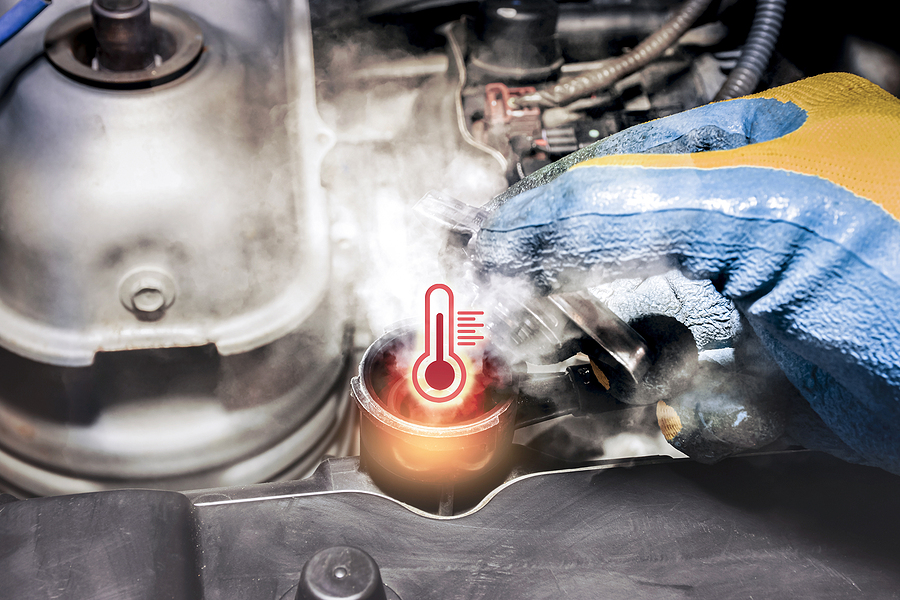A car radiator is a type of heat exchanger. It is used to transfer heat from the hot coolant that flows through it, to the air flowing around it. The radiator is made up of a series of metal fins that are connected to each other. The coolant flows through the fins, and the air flowing around the radiator helps to transfer the heat away from the coolant. The radiator is usually located at the front of the car, where it can get good airflow. It is important to keep the radiator clean and unobstructed, so that it can work effectively.
If you suspect that your car radiator is having trouble, you are probably right being as though the signs are hard to miss. Continue below to review some of the most common signs of a failing car radiator, plus how to tell if you need radiator repair or replacement.

How to Tell if Your Car is Having Radiator Problems
A car radiator is vital to the proper functioning of a vehicle’s engine and helps to keep it cool. Over time, however, radiators can develop problems that can lead to a breakdown. Here are some common signs of radiator problems:
▷ Leaks – One of the most common signs of radiator trouble is leaking coolant. Coolant leaks can be caused by a number of issues, including cracks, holes, or loose fittings.
▷ Overheating – Another sign that your radiator may be failing is if your vehicle’s engine begins to overheat frequently. If the radiator isn’t able to properly cool the engine, it will cause the engine to overheat.
▷ Corrosion – Another sign of radiator problems is corrosion. Corrosion can cause the radiator to leak or become clogged, preventing proper coolant flow.
▷ Strange Noises – If you hear strange noises coming from your vehicle’s engine, it could be a sign that the radiator is failing. These noises may include hissing, bubbling or gurgling sounds.
If you notice any of these signs, it’s important to have your car radiator checked by a professional Carmel IN mechanic as soon as possible. Radiator problems can quickly lead to engine damage, so it’s important to nip them in the bud before they cause too much harm.
Radiator Repair and Replacement Costs
The cost of car radiator repair will vary depending on the severity of the damage and the make and model of your vehicle. However, on average, you can expect to pay between $200 and $400 for the repair. If your car radiator is leaking, it is important to have it repaired as soon as possible to avoid further damage to your engine. However, if the damage is not severe, you may be able to repair it yourself with a radiator repair kit. These kits can be purchased at most auto parts stores and usually cost between $20 and $50.
If you have a car radiator that needs to be replaced, the cost will be significantly higher. On average, you can expect to pay between $800 and $1,200 for the replacement. The exact cost will depend on the make and model of your vehicle, as well as the labor costs associated with the replacement. However, if you have a high-end car, the cost could be even higher.
Are you the owner of a high-end European or German vehicle that requires some automotive work? Contact Autohaus Dierolf at 317-571-0800 for car radiator repair in Carmel, Indiana. We are German factory trained mechanics who specialize in German and European vehicles. We also sell refurbished used auto parts!
Related Posts:
Top 5 Signs Your Car Needs Fuel System Cleaning
5 Car Maintenance Services That Protect Your Life
5 Budget-Friendly Ways to Extend the Life of Your Import Car
